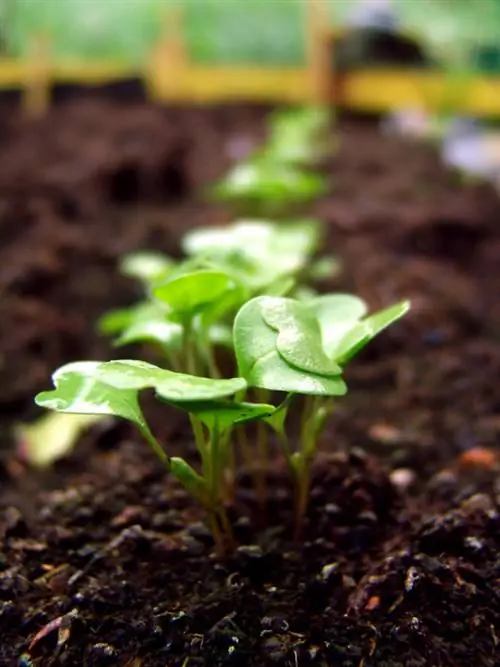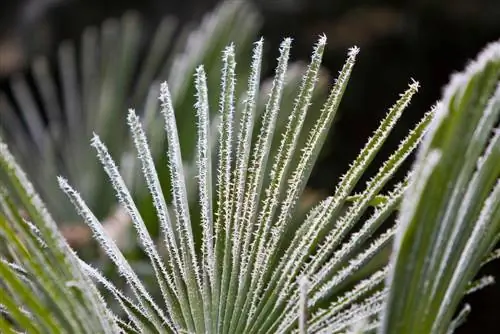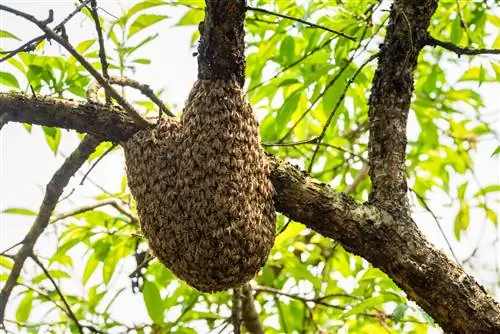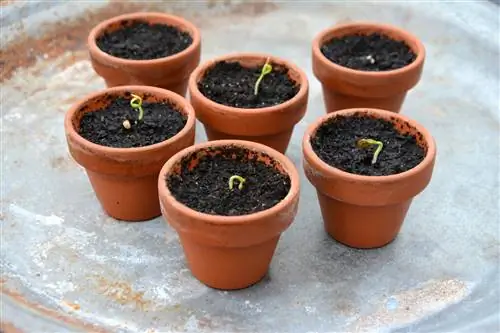- Author admin [email protected].
- Public 2023-12-16 16:46.
- Last modified 2025-01-23 11:19.
If you sow the rocket in the garden, the easy-care plant will ensure its reproduction all by itself. The seeds will disperse themselves if you allow some plants to flower. Please note the following instructions when sowing for the first time:

Why does rocket only need to be sown once?
Rocket only needs to be sown once in the garden, as the plant organizes its reproduction independently. If you let some plants flower, the seeds will spread on their own. The rocket can be sown all year round in the greenhouse or on the windowsill.
Sowing all year round
In the greenhouse or on the windowsill, rocket can be sown all year round at a germination temperature of 10 to 16° C. Start sowing outdoors or in balcony boxes in March when the soil has warmed up to at least 10ºC. Rocket can easily be re-sown again and again until the beginning of September. Sowing in multiple sets ensures fresh leaves all year round.
Soil and site requirements
The extremely robust rocket does not place any special demands on soil conditions. Acidic, neutral or calcareous soil are equally suitable. You just need to make sure that the soil is kept evenly moist, just to prevent flea beetle infestation. The grown plants can also tolerate prolonged drought. A garden spot in the sun or partial shade with loose, humus-rich soil is ideal for initial sowing.
Sowing
A variety of annual and perennial rocket varieties are available in garden centers and online shops. Choose a fast-growing, bolt-resistant and safe-to-grow variety of good quality. As a rule, the one-off investment is worth it, as the rocket will later multiply itself through self-sowing.
The seeds are usually sown in rows with a row spacing of around 15 cm. The seeds are placed in grooves about 1 cm deep and covered with a thin layer of soil. Water as usual and do not let it dry out.
Depending on the variety, the germination time is around 5 - 15 days at a soil temperature of 15 - 20 °C. After sprouting, the seedlings should be separated so that strong young plants can develop. Ready-made seed tapes are also available from specialist retailers, which eliminate the risk of warping when used. The first fresh leaves can be harvested just 4-6 weeks after sowing!
Tips & Tricks
Crop rotation should be observed, i.e. H. Sow after 3 years at the earliest in beds in which other cruciferous plants, such as white, red or Brussels sprouts, were previously grown.






